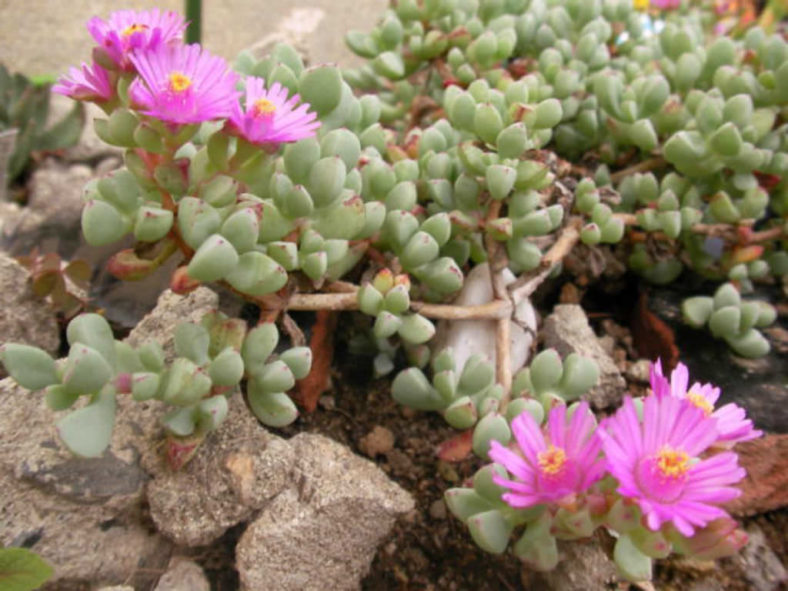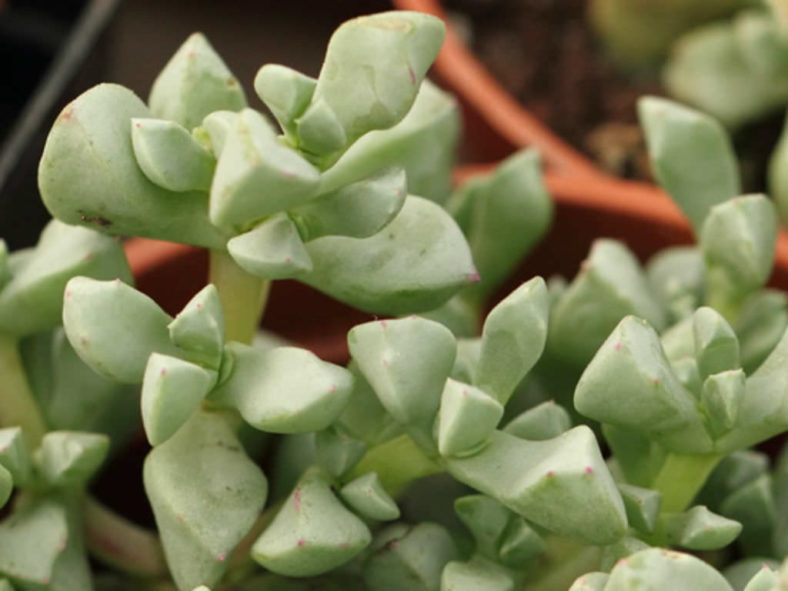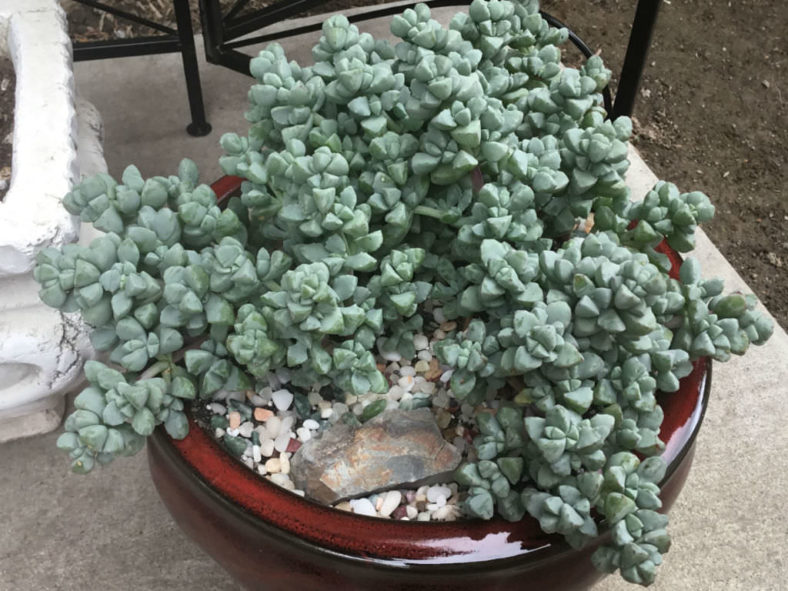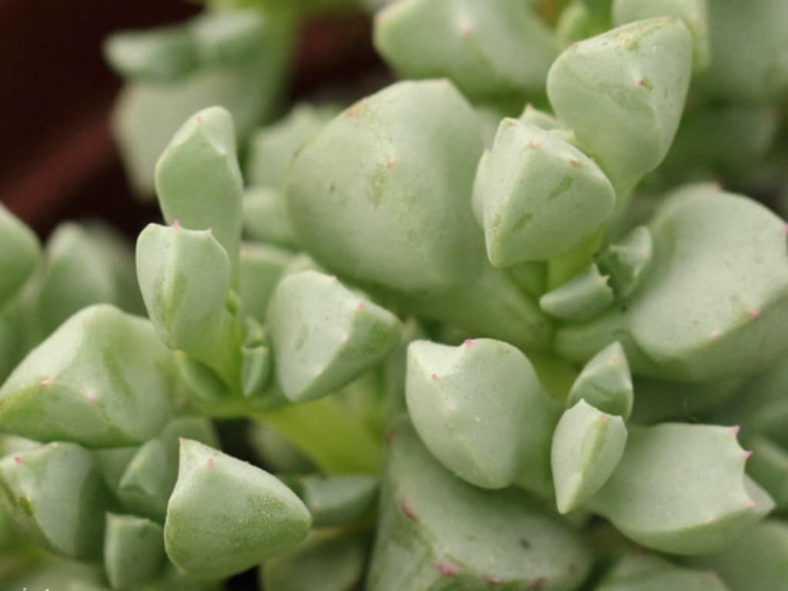Scientific Name
Oscularia pedunculata (N.E.Br.) Schwantes
Synonym(s)
Mesembryanthemum deltoides var. pedunculatum, Oscularia deltoides var. pedunculata
Scientific Classification
Family: Aizoaceae
Genus: Oscularia
Description
Oscularia pedunculata is a succulent groundcover with branching, brownish-red stems and fleshy, 3-angled leaves. It grows up to 1 foot (30 cm) tall with a spread of up to 3 feet (90 cm). The new growth of stems is fleshy, becoming woody with age. The leaves are blue-gray with a tip tinged with red.
The flowers are purplish-pink, pinwheel-shaped, measure up to 1.2 inches (3 cm) in diameter, and appear from late spring into early summer. They open fully as the afternoon approaches.

Hardiness
USDA hardiness zones 8b to 11b: from 15 °F (−9.4 °C) to 50 °F (+10 °C).
How to Grow and Care
Mesembs are mostly adapted to relatively predictable rainfall patterns rather than extreme drought and irregular rainfall. Total rainfall may be extremely low, but water is available at least seasonally or through fog and condensation. This leads to or allows plants that are not especially large and sometimes very small and affects the way they need to be treated in cultivation.
The care basics are simple, with free-draining soil, plenty of sun and ventilation, and regular light watering in the right season. Yet the difficulties are endless, trying to adapt to the Mesembs' adaptability and follow their growth habits in your particular conditions.
These plants require a loam-based compost with extra drainage material such as horticultural grit or perlite. They all like good light conditions and plenty of ventilation.
Some are relatively cold-hardy and can even survive mild winters outside. Most will survive temperatures down to the freezing point. Some Mesembs begin to grow in the fall as the temperature drops and the days get shorter.
See more at How to Grow and Care for Mesembs.
Origin
Oscularia pedunculata is native to South Africa.
Links
- Back to genus Oscularia
- Succupedia: Browse succulents by Scientific Name, Common Name, Genus, Family, USDA Hardiness Zone, Origin, or cacti by Genus
Photo Gallery
Click on a photo to see a larger version.


